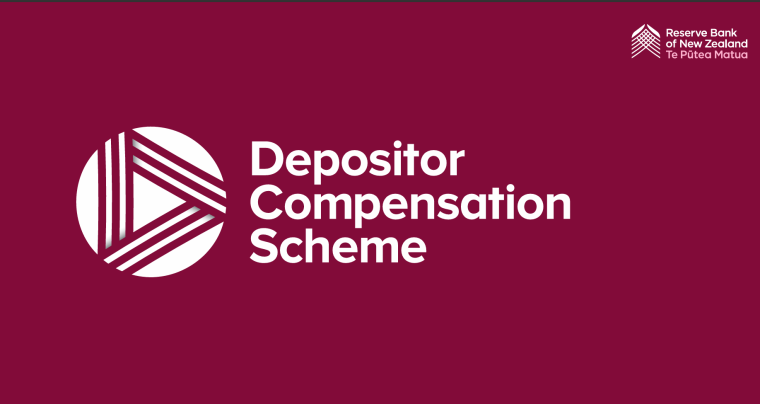
The Depositor Compensation Scheme takes effect on 1 July, covering around $1 billion of deposits. In the first of two articles Nick Stride looks at who will pay for it.
Lights have been burning late this month at the 29 financial institutions about to start funding the Depositor Compensation Scheme (DCS).
The $1 billion (current estimate) fund will eventually offer limited compensation for investors in the event of the collapse of a bank, finance company, credit union or building society.
The fund will be built up, by around 2045, from an estimated $80 - $85 million of annual levies on the institutions covered – deposit-takers licenced by the Reserve Bank of New Zealand (RBNZ).
But weeks out from commencement, some were still not sure how much exactly they will pay.
And while deposit-takers seem unanimous the scheme is a good thing, smaller players – Non-bank Deposit Takers or NBDTs - aren’t convinced the banks will be paying their fair share.
The scheme covers deposits up to a limit of $100,000 per customer per institution. It includes transaction (or “cheque”) accounts, savings accounts, and term deposits.
To start calculating how much each deposit-taker would pay, the RBNZ had to come up with an estimate of how much New Zealanders hold in accounts with a balance of less than $100,001.
Getting an accurate fix on that will have to wait until deposit-takers are able to report according to the new Single Customer View standard, by July 2028.
Until that “customer-level” data is available, the Levy Base on which deposit-takers’ levy bills will be calculated using a proxy based on wholesale data collected by the RBNZ.
Levies will be invoiced annually in arrears. The first DCS Levy will apply to the 2025/26 fiscal year, and RBNZ plans to issue the first invoice shortly after July 2026.
Each deposit-taker’s “levy base” will be multiplied by an “adjustment factor” designed to recognise the difference between account and customer-level data, as well as above-cap deposits.
The factor will be 0.7 for registered banks, 0.8 for credit unions, and 0.4 for building societies and finance companies.
In effect this means banks will be levied on $70,000 for each $100,000 protected deposit, credit unions $80,000, and the other “NBDTs” (non-bank deposit takers) $40,000.
An RBNZ spokesperson explains; “The multipliers are not designed to favour any deposit taker, rather, calibration of the rates is based on the expected payout for each type of deposit taker. These have been based on average account sizes and using previous estimates that deposit takers reported to the RBNZ.”
A second factor, risk, will then be applied. Deposit-takers will fall into one of four risk categories assigned to them by the RBNZ. This will be judged on an aggregate “score” taking into account prudential capital, liquidity, profitability and asset quality.
The Risk Category (RC) multiplier increases as the risk rating falls: 0.00053 for Category 1, 0.0008 for Category 2, then 0.00123 and 0.00158.
That implies a bank at RC1 will pay $37.10 a year per $100k "insured" while an NBDT at RC4 will pay $63.20, a 70% differential.
Despite the difference, the RBNZ says, institutions with the lowest risk rating will still pay the lion’s share of the annual levy bill because of their size.
The RBNZ also thinks levy costs will have only a small effect on NBDTs’ profitability.
“For NBDTs, of those firms with positive net profit, the levy cost as a percent of past net profit has a median of 3.72%, using net profit before tax for the 2024 financial year,” RBNZ says in its regulatory impact statement.
“The estimated levy amount would be more than 3% of the NBDT’s 2024 financial year net profit before tax for five of the 10 NBDTs who had positive 2024 profitability.”
During the transitional period until licensing in 2027/28, credit unions, building societies and registered charities, but not banks or finance companies, will have an effective RC1 multiplier of 0.00055.
This recognises, the RBNZ says, “challenges to their soundness” posed by the necessity to pay levies.
But the devil’s in the detail, with some NBDT executives still trying to figure out exactly how their institution’s risk score will be calculated.
The target of insuring 0.8% of protected deposits implies $125 billion total deposits, of which only $1 billion will be covered by the DCS umbrella.
But, in the event a collapse takes with it more money than the fund’s worth, the Crown will play the same “backstop” role it played after the collapse of South Canterbury Finance in 2010.
“The Crown is well placed to play this role given New Zealand’s relatively low debt levels and the significant liquidity buffer operated by the Crown,” according to Treasury’s March 2024 consultation document.
“The Crown’s liquidity buffer was increased significantly post-Covid and as a result, a $15 billion buffer is now maintained.”
A recurrent theme among NBDT submissions during the DCS’ development has been that the “Crown backstop” gives banks an inherent advantage.
As Gold Band Finance’s submission puts it;
“In the event of the failure of a systemically important bank, the Crown would [potentially] compensate depositors up to the full value of each deposit.
“We do not believe the Crown would adopt a similar approach for the smallest deposit taker.”
The banks, Gold Band and several other NBDTs argued, expose the deposit taker sector to systemic risk, and should therefore pay a levy premium.
Gold Band acknowledged that NBDTs have higher levels of risk than banks. The higher levies that risk attracted could be sufficient to affect their profitability and constrain their ability to grow and compete, it said.
Several credit unions and building societies argued the profitability component of the levy calculation doesn’t take into account that profit is not their only motivation – “doing the right thing” for their members and communities were also part of their business models.
The RBNZ acknowledges there can be a trade-off “at times” between fostering competition and protecting and promoting financial system stability – the primary objective, it notes, of the DCS.
Until 2028 at least, the 0.00055 “concessionary rate” will give credit unions, building societies and registered charities breathing space.
The second article will examine how the RBNZ and the industry think the DCS could affect investor and deposit-taker behaviour.
*This article was first published in our email for paying subscribers. See here for more details and how to subscribe.
1 Comments
Given the existence of the Open Bank Resolution (OBR) alongside the new Dashboard, I'm not convinced a deposit guarantee scheme was needed.
Especially one which only protects up to $100,000 in deposits.
But then, we've not seen the OBR in action yet.

We welcome your comments below. If you are not already registered, please register to comment.
Remember we welcome robust, respectful and insightful debate. We don't welcome abusive or defamatory comments and will de-register those repeatedly making such comments. Our current comment policy is here.